It is always interesting to look back at projects which have been done in these Islands and closely look at their aspects, as in this particular project’s case study.
D&B spoke to Antoine Bonello, Managing Director of The Resin and Membrane Centre to discuss in some detail one of the more prestigious projects they handled.
The Collegiate Archmatrix Parish Church of Saint George of Qormi is one of the 12 parishes mentioned in the rollo of Bishop Senatore de Mello in 1436. The dome was added in 1684 on designs by Lorenzo Gafà.
The church is adorned with art masterpieces by Mattia Preti and Giuseppe Calì of great historic value, as well as a gold gilded vault, and a pala d’altare which dates to approximately the middle of the 15th century. This pala d’altare consists of four different panels. The central panel depicting Our Lady of Sorrows. The other panel depicts St George, St Gregory, and Christ on the cross.
The process
Antoine explained that TRMC was approached for this challenging job by the parish authorities because they felt there was too much at stake in the job and they needed to have the right people with the right expertise handling its delicate requirements. They needed to be certain that their treasures were safe and that the people doing the “miracle” to stop them getting wet in any way actually knew what they were doing!
Methodology
When circumstances are beyond the norm, The Resin & Membrane Centre (TRMC)’s Italian experts advise them throughout the operation because Italy possesses a large number of churches of similar historical value and adorned with similar artefacts, and they would have more often than not already consulted on similar cases.
Two Italian specialist architects were therefore brought on board from the very start, both experts in resin and its use where historical sites are concerned. Antoine explained that “our experts were already familiar with the modern and past methods of work and materials found on site. As an example, they were already familiar with what we used to refer to in the business locally as ‘deffun’; an age-old mixture of clay and other materials that was used prior to the introduction of cement to the industry.”
Due to the size of this daunting task TRMC had also collaborated with their Italian mother company which provided the specialised materials and expertise so that TRMC could produce a job that safeguarded the church against all elements.
Our materials resist stagnation and are also highly resistant to UVAs
Antoine said: “We first removed All existing patina, dust, debris and whatever else had collected there over the years, and we started to treat it. First, we applied a series of consolidators to strengthen the deffun.
“We then had to apply a binding mortar and treat the cracks and missing parts. This included a primer with biocide properties to make sure that all existing mould and other ever-growing micro particles or organisms that are residing there are killed. All this was then encased in a layer of fibreglass. After this we added another four coats of resin.”
An additional problem faced was the wind which obviously carries a high percentage of dust and other contaminants.
Antoine explained that their products are certified to resist these wind problems – producing what is known as a ‘sandblasting effect’ – since the resin membrane was being applied in a situation sited at quite a high position and therefore very prone to these wind problems. “Our materials resist stagnation and are also highly resistant to UVAs – an important factor to consider since in Malta we tend to register high UV levels in the 15-17 factors level quite regularly. The right gradients were implemented to also improve the running flow of any water on the surfaces rather than to create new canals and so on.” Throughout the operation, the priority was to preserve the existing and not to interfere or to tamper in any way with what had been prepared and projected originally.
“We wanted to make sure than if in 50 – or 60 years’ time, technology would have advanced to the point that more efficient solutions would be available to make a more effective use of the material interface, and our client would then wish to make interventions on the original surface, then we wouldn’t have interfered and this would still be possible. We have therefore restored the roof and applied the membrane in line with these thoughts.
heat will not pass and it will create an ambience that is cool in summer and warm in winter
“As I already explained, we made sure that the roof was restored, the products used were non-invasive and the existing surface was not damaging the original building in any way.
In some cases the membrane itself acts as an insulation since it has the ability to reflect all existing rays – UV, infra-red and natural – so that heat will not pass and it will create an ambience that is cool in summer and warm in winter, thereby also safeguarding the paintings and other historical artefacts” he added.
The two membranes used – white and grey – have different uses and components, since the white is obviously the more potent one in terms of insulation and anti sun use through its reflecting properties while the grey is more in keeping with the traditional colours of church cupolas.
Work was painstakingly all done on the cupolas by hand all around using specialised quality tools by a specialised technician with years of experience to do it right. “This is definitely not a DIY job” he added. In fact, he said that there were certain areas where it was rather difficult to work in and therefore one had to proceed slowly and carefully.
Although there were no defined deadlines, (which TRMC found helpful) nonetheless the process also required that there was enough time for each layer of this multi-layer application, to completely dry up before the next one was applied.
Testing
Obviously tests were made as the work progressed on the different layers. Specialised thermal imaging cameras were used to monitor these stages to see how they were behaving regarding heat and humidity.
Some major areas had to be divided into separate projects, and serviced about two years apart (for financial and logistical reasons) and when the second adjacent part got underway it was clear to everyone that what had been laid two years earlier was still reacting like the brand new one being done. “This is the best certificate for us, for our product, and for our service” added Antoine. “It was behaving as good as new! No signs of deterioration or rust, or that anything was wrong..and more importantly was the reality that no signs of water entry were visible at all,” he added.
we also used our thermal imaging cameras to double check the situation as it progressed
Since the work was carried out in the summer months, TRMC did not need to carry out any moisture tests on the stone directly beforehand. Before works were started, the stone was given sufficient time to dry out completely, so as to avoid having any moisture trapped within the stonework itself. And though this methodology was prevalent for all the different layers involved, “nonetheless we also used our thermal imaging cameras to double check the situation as it progressed.”
Materials
Guidance given by TRMC’s mother company during its choosing of which materials to utilise was based on their experience gained while servicing hotter African countries such as Tunisia and Sudan, where the UV levels are much higher than in Malta.
The method of works used actually certify the types of structures involved, and the types of solutions that were applied in different places were based on the level of experience already available to the company. A serious issue TRMC encountered is that the roof had cracked in certain places and this could have been caused by many factors, such as vibration, tremors, and basic building movements.
“Certain polymers were used in specific cracks and especially so where we needed a certain level of elasticity” explained Antoine. “We wanted to ensure that the cracks wouldn’t reopen once the project was finalised.” Indeed, their foreign experts had scrutinised the site before the works had started, as well as during implementation.
All this detailed attention and study came at the initial stages of the preparatory works such that one can say that this is now all ‘buried’ under the over-laying treatments that were finally done. Additionally, TRMC had to equate into their preparatory studies the effects on the roofs and domes caused by people walking on them “during the letting off festa fireworks, for example, and the resultant effects of this noise factor on the structures themselves.”
As a result there is now in place a situation where if a fireworks mortar or such items had to misfire and fall onto the church roof, there would be no risk of the treatment material being set alight since the treatment utilised (MP7, the range’s flagship) also has anti-flammable properties.
“This approach to doing things gives us the edge over any claimed competition, especially in areas involving sensitive buildings and difficult situations,” said Antoine. “We use the same approach and methodology at heart on all projects and important buildings.”
Guarantees
This church in question was guaranteed for the period of 20 years from when the materials were laid. Nonetheless there could still be the need for some maintenance intervention from time to time “and this would be because the client might note some deterioration of sorts in the membrane and would draw our attention to check if it needs further work or not,” explained Antoine, adding that the company was not responsible for any “acts of God” but for the materials used. Nonetheless, though they cannot guarantee how “God” would act in the 20 years of the guarantee, they obviously have faith in the fact that they have already made sure that their product is delivering all that it is supposed to deliver!
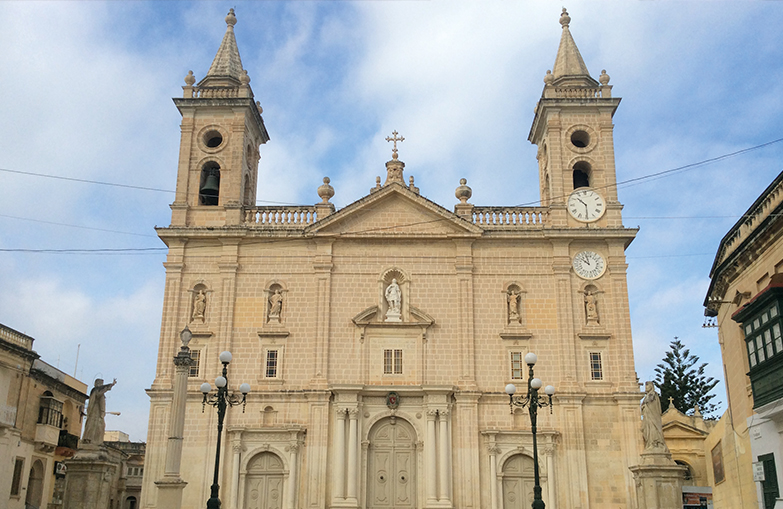
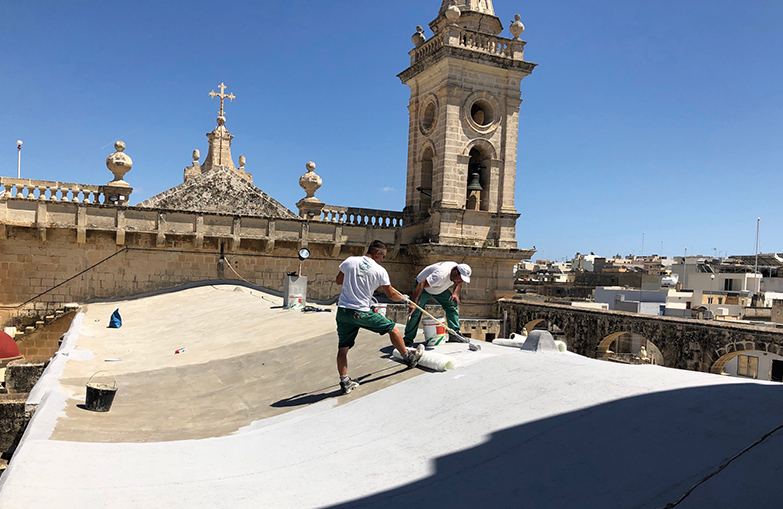
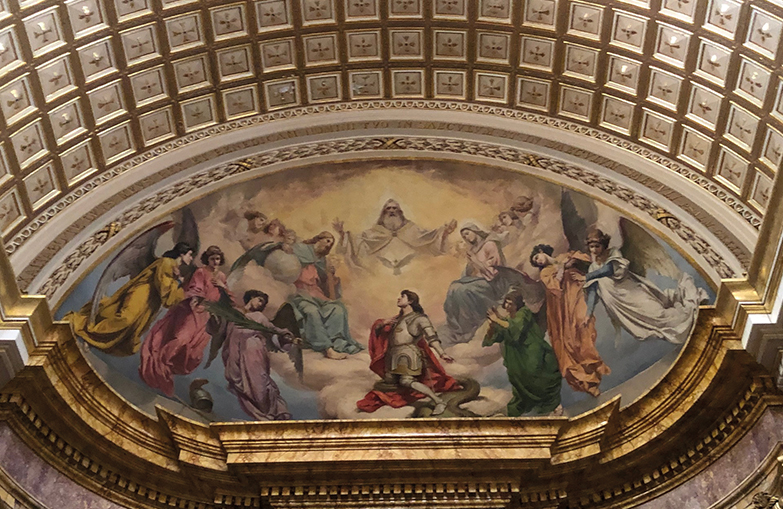
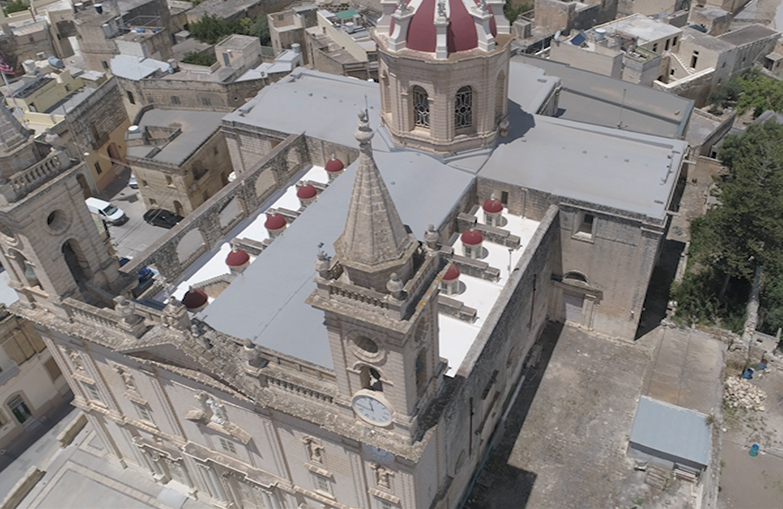
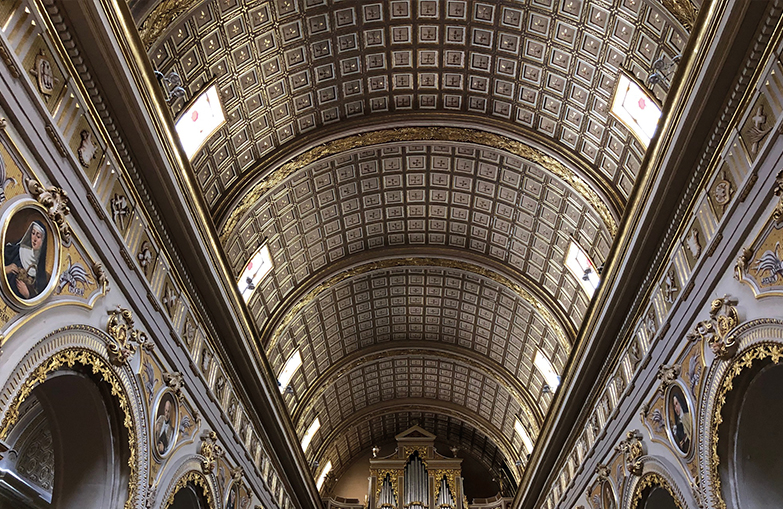
Comment